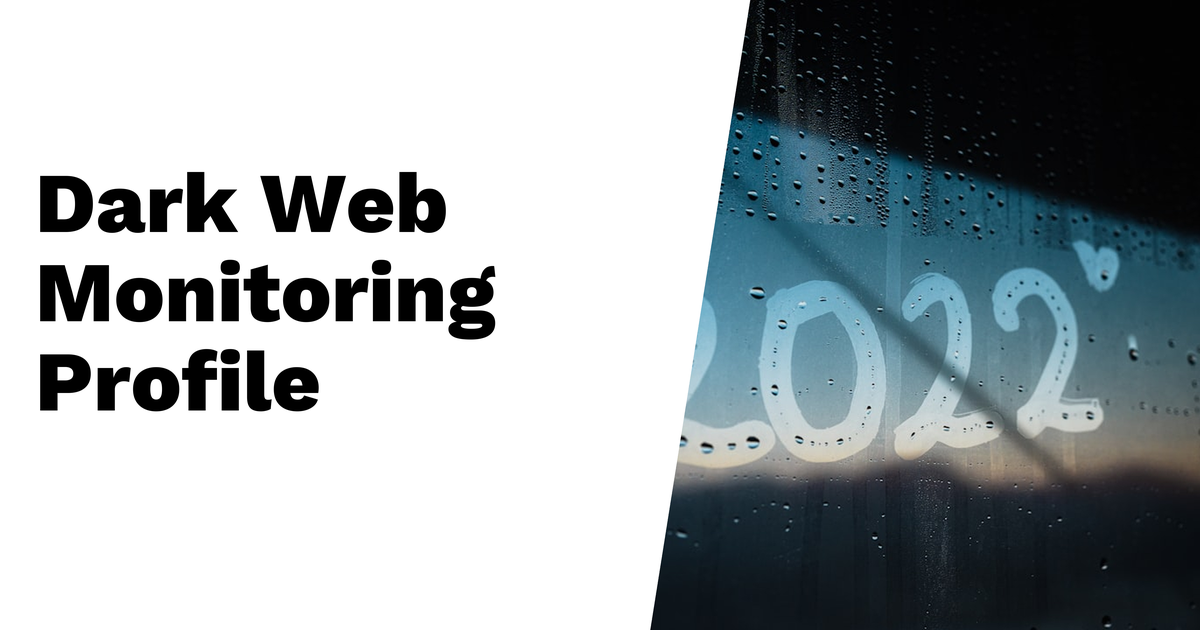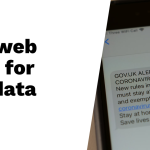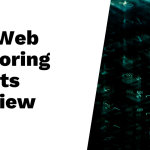Dark web monitoring is quickly becoming a must-have for safeguarding sensitive information in 2025. It involves scanning hidden parts of the internet to detect compromised data tied to individuals or organizations. This practice not only serves as an early warning system against potential breaches but also reinforces compliance with regulations like GDPR and HIPAA. Setting up an effective monitoring profile includes defining what needs tracking, selecting reliable tools, and establishing alerts based on breach severity. Integrating this system into existing security measures enhances responsiveness, allowing organizations to act swiftly when threats arise and build trust with their clients through comprehensive protection strategies.
Table of Contents
- Understanding Dark Web Monitoring
- Setting Up a Dark Web Monitoring Profile
- Choosing the Right Dark Web Monitoring Tool
- Configuring Alerts and Severity Scoring
- Integrating Monitoring with Security Systems
- Acting on Findings for Improvement
- Tools for Dark Web Monitoring in 2025
- Key Features of Effective Monitoring Tools
- Future Trends in Dark Web Monitoring
- Frequently Asked Questions
1. Understanding Dark Web Monitoring

Dark web monitoring is about scanning hidden parts of the internet for signs that personal or organizational data has been compromised. This practice is crucial, as it helps provide early warnings of potential data breaches, allowing organizations to take action before any damage occurs. Tools for dark web monitoring typically use automated scanning and keyword monitoring, which means they can constantly check for specific terms that may relate to sensitive information. Additionally, threat intelligence analysis plays a vital role by identifying leaks of sensitive data, such as employee credentials, financial details, and proprietary information.
Given that the dark web is not indexed by standard search engines, monitoring it effectively requires specialized tools and expertise. The risks of not engaging in dark web monitoring are significant, including identity theft and financial losses. Therefore, understanding what types of data are at risk is essential for creating an effective monitoring strategy. It’s equally important to regularly update the criteria for monitoring as threats evolve over time. Collaborating with cybersecurity experts can further enhance the capacity to monitor and respond to these risks effectively.
- Dark web monitoring scans for compromised personal or organizational data on the dark web.
- It provides early alerts about potential data breaches, allowing timely action.
- Automated scanning and keyword monitoring are key features of these tools.
- Threat intelligence analysis helps identify sensitive data leaks.
- Monitoring can include employee credentials, financial information, and proprietary data.
- The dark web is a hidden part of the internet, making it challenging to monitor without specialized tools.
- Data found on the dark web can lead to identity theft and financial losses.
- Understanding the types of data at risk is crucial for effective monitoring.
- Regularly updating monitoring criteria is necessary as threats evolve.
- Collaboration with cybersecurity experts can enhance monitoring strategies.
2. Setting Up a Dark Web Monitoring Profile
To set up a dark web monitoring profile effectively, start by identifying the specific data points you need to monitor. This includes personal emails, sensitive files, and any data related to your organization’s identity. Don’t overlook former employees and third-party contractors, as their data may still pose a risk. Next, choose monitoring tools that offer real-time alerts and comprehensive coverage. It’s crucial that these tools can notify you of critical breaches immediately.
Develop a clear communication plan for alert notifications among team members. This ensures that everyone knows how to respond promptly to threats. Regularly review and adjust your monitoring profile to adapt to new threats, documenting the process to maintain consistency and accountability. Prioritize monitoring critical data types, such as Social Security Numbers and passwords, as these can lead to severe consequences if compromised.
Engage with stakeholders to understand their concerns and needs regarding monitoring. This collaboration can help tailor your approach effectively. Periodically test the monitoring setup to ensure everything functions as intended. Additionally, train team members on how to respond to alerts effectively, ensuring that your organization is prepared to act swiftly in case of a data breach.
3. Choosing the Right Dark Web Monitoring Tool
When selecting a dark web monitoring tool, it’s crucial to consider several factors that can affect its effectiveness and usability. Start by looking for tools that offer continuous scanning and real-time alerts, as this allows you to respond swiftly to potential threats. A user-friendly interface is also essential, as it simplifies navigation and reporting, making it easier for your team to engage with the system.
Evaluate how well the tool integrates with your existing security systems, such as SIEM or SOC platforms, to ensure a seamless flow of information. Vendor reliability is another key aspect; research the company’s reputation in the industry and assess the support they offer. Tools that provide comprehensive threat intelligence insights can empower your organization to understand the context of potential breaches.
Customizable alert settings are important too, as they allow you to prioritize notifications based on breach severity, this way, critical alerts get immediate attention while less urgent issues can be monitored over time. Consider tools that offer automated response features, which can help you take quicker action when a threat is identified.
Don’t forget to seek out reviews and testimonials from other users to gauge the effectiveness of the tools you are considering. Ensure that the chosen solution aligns with your organization’s specific industry needs, as different sectors may have unique requirements. Lastly, understand the pricing models available to find a solution that fits your budget while still meeting your monitoring needs.
4. Configuring Alerts and Severity Scoring
Creating a tiered alert system is essential for managing dark web monitoring effectively. Start by categorizing breaches into three severity levels: critical, high, and low. Define what makes a breach fall into each category. For instance, a critical breach may involve plaintext passwords or admin credentials, while high severity could involve hashed passwords, and low severity could pertain to old or inactive accounts. This clear classification helps streamline your response efforts and prioritize where immediate action is needed.
To ensure timely responses, implement automated notifications that alert relevant personnel when critical breaches occur. This could mean sending immediate emails or texts to security teams, enabling them to react swiftly. Regular updates to the severity criteria are also crucial, as threats evolve and new intelligence becomes available. Establish a feedback loop to assess how well the current alert configurations perform; this will help refine your approach.
Training staff on how to interpret alerts and prioritize responses is equally important. They should understand not just the alerts but the rationale behind the severity scoring. Documenting the alert configuration process promotes accountability and ensures everyone is on the same page. Lastly, regularly test your alert systems to confirm they work as intended. Incorporate lessons learned from past incidents to improve your alert settings and make your monitoring profile more robust.
5. Integrating Monitoring with Security Systems
Integrating dark web monitoring tools with your Security Information and Event Management (SIEM) systems is essential for effective cybersecurity. This integration allows for real-time alerts to flow directly into your security operations, enhancing your ability to respond to threats quickly. Establishing clear workflows is crucial, as these processes ensure that alerts are acted upon immediately and efficiently. Assigning specific roles and responsibilities to team members can streamline this integration, making sure everyone knows their tasks during an incident.
Regularly reviewing the effectiveness of this integration is vital for maintaining optimal performance. It is important to monitor how well your systems work together and adjust processes as necessary. Utilizing dashboards can provide a comprehensive view of threats, enabling teams to see the bigger picture across various systems. Incorporating dark web findings into your overall threat intelligence strategy enhances your organization’s security posture.
Compliance with data protection regulations must be considered during the integration process. This ensures that your methods align with legal standards, protecting both your organization and its clients. Training staff on integrated workflows maximizes efficiency and reduces the chances of human error. Moreover, engaging with vendors for support during the integration process can provide valuable insights and assistance, ensuring a smoother setup and operation.
6. Acting on Findings for Improvement
When dark web alerts are triggered, having a clear action plan is essential. Start by implementing best practices, such as rotating passwords and enforcing multi-factor authentication (MFA) to enhance security. It’s crucial to promptly notify affected users, as this can help mitigate risks and prevent further damage. After a breach, conduct regular audits of account activities to understand the extent of the issue and identify any potential vulnerabilities. Establishing a feedback mechanism allows your team to learn from breaches and refine your strategies over time. Regularly review and revise your monitoring processes based on findings, ensuring they adapt to new threats. Engaging cybersecurity experts to analyze breaches and recommend actions can provide valuable insights. Document all actions taken in response to alerts, creating a reference for future incidents. Sharing lessons learned with your team fosters a culture of proactive security awareness, making everyone more vigilant. By integrating these practices, organizations can create a robust defense against dark web threats.
7. Tools for Dark Web Monitoring in 2025
In 2025, selecting the right tools for dark web monitoring is crucial for safeguarding sensitive information. Google One offers dark web monitoring for personal data, but it’s important to note that this feature is only available to paid members. For organizations looking for comprehensive alerts, Prey stands out with its seamless integration into existing security setups, providing timely notifications about potential threats. SentinelOne goes a step further by incorporating automated responses and threat intelligence integration, which enhances the overall security posture.
For businesses in specific industries, tools like DarkIQ specialize in tailored insights, making them valuable for organizations that require industry-focused monitoring. BreachAware emphasizes proactive alerts and remediation strategies, ensuring that organizations are not just aware of potential breaches but are also prepared to respond effectively. Meanwhile, ID Agent Dark Web ID focuses on businesses, offering customized monitoring options that cater to unique organizational needs.
When evaluating these tools, consider their features against your organization’s requirements. Look for user-friendly interfaces and robust support options, as these factors can significantly affect your team’s ability to respond to threats. Additionally, prioritize tools that provide educational resources about dark web threats, as ongoing education is vital in this rapidly evolving landscape. Finally, regularly reassess the effectiveness of the tools in use to ensure they continue to meet your organization’s monitoring needs.
| Tool Name | Key Features | Target Users | Pricing Model |
|---|---|---|---|
| Google One | Dark web monitoring for personal data | Personal users, paid members | Subscription-based |
| Prey | Alerts, integrates with security setups | Businesses, organizations | Subscription-based |
| SentinelOne | Automated responses, threat intelligence integration | Enterprises | Subscription-based |
| DarkIQ | Industry-specific monitoring | Businesses in targeted industries | Custom pricing |
| BreachAware | Proactive alerts and remediation | Businesses | Subscription-based |
| ID Agent Dark Web ID | Customized monitoring options | Businesses | Subscription-based |
8. Key Features of Effective Monitoring Tools
Effective dark web monitoring tools come equipped with key features that enhance their functionality and usability. Continuous scanning is essential, as it allows for real-time detection of compromised data, ensuring that organizations can respond swiftly to potential threats. A customizable alert system is also crucial, enabling organizations to tailor notifications according to their specific needs, prioritizing alerts based on severity and relevance.
User-friendly dashboards simplify data interpretation, making it easier for teams to understand and act on the information presented. Integration capabilities with existing IT and security infrastructures are vital, allowing for seamless collaboration between various security tools and systems.
Furthermore, comprehensive threat intelligence analysis enhances detection accuracy, providing deeper insights into potential risks. Effective monitoring tools should support multiple data types, including personal and financial information, ensuring that all sensitive data is adequately protected.
Regular updates to the tool are necessary to adapt to evolving threats, ensuring that the monitoring system remains effective in a constantly changing cyber landscape. Strong customer support is also important, offering resources for troubleshooting and guidance when needed. Additionally, reporting features that provide insights into monitoring effectiveness help organizations assess their security posture over time. Finally, scalability is key, allowing organizations to expand their monitoring capabilities as they grow and their needs change.
9. Future Trends in Dark Web Monitoring
As we look to the future of dark web monitoring, several trends are emerging that will redefine how organizations approach their cybersecurity strategies. The increased use of artificial intelligence and machine learning will enable predictive analytics, allowing companies to anticipate threats before they materialize. This shift means that monitoring tools will not just react to threats, but actively help in forecasting potential vulnerabilities.
Moreover, there will be a greater emphasis on integrating dark web insights with overall cybersecurity frameworks. Organizations will realize that dark web monitoring cannot operate in isolation. It will be essential to weave this intelligence into broader security measures to enhance threat detection and response.
In addition, the emergence of more user-friendly monitoring tools is set to empower non-technical users to engage in dark web safety. This democratization of technology will ensure that everyone, regardless of technical skill, can contribute to safeguarding sensitive information.
Real-time risk assessment tools will also become more prevalent. These tools will provide immediate insights based on dark web findings, allowing organizations to take swift action when threats are detected. Enhanced collaboration between organizations and cybersecurity firms will further enrich this landscape, promoting shared intelligence that can strengthen defense mechanisms across the board.
Regulatory compliance will continue to play a crucial role in monitoring practices, as organizations must navigate the evolving landscape of data protection laws. Additionally, blockchain technology may be used to bolster data security and monitoring capabilities, offering transparent and tamper-proof records of data access and breaches.
The rise of personalized security solutions tailored to specific industries will also be significant. Different sectors have unique risks, and monitoring tools that cater to these specific needs will become invaluable. Furthermore, with public awareness of the dark web and its associated risks increasing, organizations may find that consumers are more vigilant and proactive about their data security.
Lastly, as dark web marketplaces evolve, organizations will need adaptive monitoring strategies that can keep pace with the ever-changing threats present in these hidden corners of the internet.
Frequently Asked Questions
What is a monitoring profile for the dark web?
A monitoring profile helps you keep an eye on your personal information on the dark web. It tracks if your details, like email or passwords, are being shared or sold.
How do I set up my monitoring profile?
To create a monitoring profile, you usually need to choose a reliable service, enter your details like emails or usernames, and set your preferences for alerts.
Why should I monitor the dark web?
Monitoring the dark web is important because it can alert you if your information is compromised. This way, you can take steps to protect yourself from identity theft.
What types of information can I monitor on the dark web?
You can monitor various types of information, including your email addresses, passwords, bank info, and even Social Security numbers, to see if they’ve been exposed.
How often will I get updates from my monitoring profile?
The frequency of updates depends on the service you choose. Some might send alerts in real-time, while others might provide weekly or monthly summaries.
TL;DR In 2025, dark web monitoring has become essential for organizations protecting sensitive data. This process involves scanning the dark web for signs of compromised information, allowing for quick responses to breaches. To set up an effective monitoring profile, identify what data needs monitoring, choose the right tools, configure alerts based on severity, and integrate these tools with existing security systems. Tools like Google One, Prey, and SentinelOne offer robust solutions for proactive defense against cyber threats. Regularly act on findings to enhance security measures and maintain customer trust.





